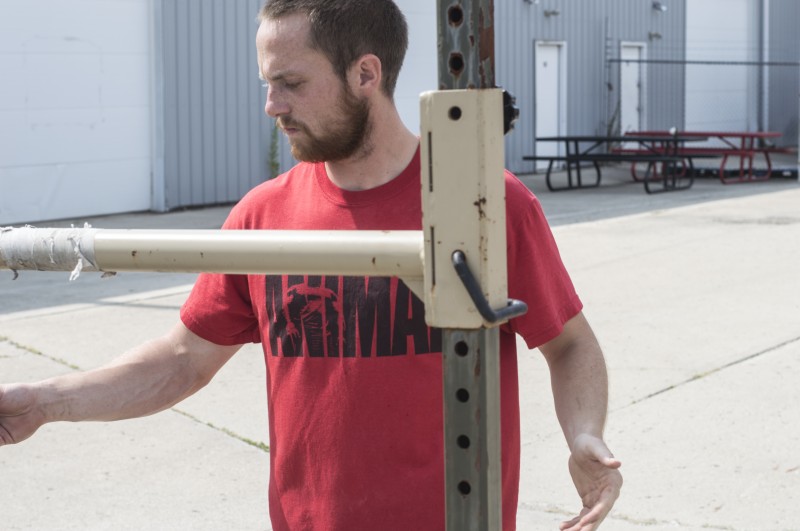
"This is not a dress rehearsal; this is your life. It's the only one you got." — Bill Murray
"We need to sit down and have a family meeting," I said. It was Saturday afternoon, and I walked over to our worn kitchen table with my notes in hand, motioning for the family to join me.
"Awe Dad. Are we in trouble again? What did we do now? Grades?" My kids echoed with slumped shoulders and pouty faces in anticipation of yet another lecture on the importance of school, grades, and doing their best to compete.
"No. We're not going to talk about your grades today," I said. "We're going to discuss something else." I pulled out a chair for my son to sit down beside me.
"What?"
"We are going to talk about goals and how to achieve your goals."
"Dad," they whined, as they reluctantly joined me, determined somehow to ignore everything I was about to say.
"I'm going to talk," I said. "Only me — and you are all going to listen to what I have to say because it's important, but first I need you to put the phones away." My daughter reluctantly put her phone on its face so she couldn't even casually snatch a glance at the screen.
I've written about goals before. Having goals and a plan to reach them, in my opinion, is paramount to achieving overall success, no matter how you define success. The plan is a critical component — the short-term goals along the way to reach the long-term goal.
"A man without a plan is not a man." — Friedrich Nietzsche
A few months ago I wrote a fictional series for elitefts called Bighorn. It's essentially a horror serial piece that takes place in and around a training facility that is remarkably similar to the gym I owned in Connecticut. I can't adequately convey how much I enjoyed writing and working on that mini-project, but it was incredibly challenging to write because of its serial form.
elitefts published the first part before I was able to complete the second part and so on. In other words, I didn't start out with an entire story that elitefts published in pieces. Under the construct, I couldn't go back and revisit previous sections to edit. If one of my characters died in the first part of the story (spoiler alert — there was blood), and I changed my mind and wanted him/her around as the story progressed, there was no opportunity to resurrect the character in a subsequent episode. Initially, I didn't know how the story was going to end, so there was tremendous pressure to create to keep the story going and make it a compelling and fun read. I know the pressure was actually of my creation, but it was there nonetheless.
It was a creative writing exercise — creative writing is one thing — challenging, but creative writing with a monthly deadline is an entirely different animal. To ensure I could keep up with my expectations (and those of elitefts) I had to set writing goals. For example, on a typical Saturday, I would wake early before the kids got up and set a goal to write 1,000 words for the day. I knew without the regimen and the discipline, I would never have been able to meet any of the deadlines.
After I had completed the fifth and final edition of the serial back in January of this year, I'd decided I would separately bolster the story and convert it into a screenplay. I've never written a screenplay (much less read a screenplay), so admittedly this was a lofty goal.
"Do you remember that fictional story I wrote for elitefts?" I asked my children. "Bighorn? The one where the monsters come out of the woods at night and terrorize the gym members?"
"Yes," they responded. I knew my son read some of it. I don't think my thirteen-year-old daughter gave it a glance (nor should she have, given the content).
RECENT: It's All About the Base
“Well, back in January, I decided I was going to turn that story into a screenplay. It is now almost the end of March. Do you know how far I've gotten on that goal?"
"How far?" They asked.
"I've done zero work on it," I said.
"Why not?" My daughter asked.
"Because I never devised a plan to get it done. I never set the blueprint to achieve the goal, so the days during which I didn't do any work turned into weeks and the weeks subsequently turned into months, and now we're sitting here — almost April, and I have nothing accomplished."
"Do you know why I'm telling you this?" I asked.
"Why?"
"Because in this instance, I’m doing what most people do and you guys are doing the same thing, and I'm watching it happen."
"Give me six hours to chop down a tree and I will spend the first four sharpening the axe." — Abraham Lincoln
I turned to my son. "Your goal was to add ten miles per hour to your fastball in a year. That year began in January. I can see that you are training hard, which is great, but you don't have a daily plan that you are following. To reach any lofty goal, you have to work on it every single day.
"You're doing a great job with your school work," I said to my daughter. "Regarding school work and studying, you're already doing what I'm talking about. I can see that. You use a planner and have a daily plan that you follow and, as you already know, it's working. It's working great.
"When it comes to lacrosse, you need to do the same thing. We need to decide where you need to improve your game and we need to create a thoughtful plan to get you where you want to go.
"I was listening to Joey Diaz, the comedian, on a podcast the other day. He talked about using a notebook to record his goal progression. He utilizes it twice a day — every day. In the morning, he writes down what he 'needs' to accomplish for the day. In the evening he writes down how he performed as compared to his daily goal. It helps keep him on track. That's persistence and persistence pays off."
Keys to Achieving a Goal
Make your personal goal definitive and measurable (e.g., don't set the goal as getting faster or stronger; get more specific — I want to shave three-tenths of a second off of my forty time, or I want to add ten pounds to my bench press or twenty pounds to my squat).
Set a realistic period for you to obtain this mid-range goal — e.g. one year or six months.
Break your mid-range goal into smaller components. Decide where your monthly effort will need to reside to achieve the target. Try and determine what you will need to learn to reach the goal or alternatively, what you'll need to focus on (e.g., perhaps it would be best to start with improving your total body strength, before drilling down the focus on a particular lift).
You can start by brainstorming on what you'll need to do and make a list. In the instance of my son, wanting to add velocity to his fastball, some ideas immediately come to mind:
- Sprints
- Prowler sprints
- Skipping rope
- Lower body plyometrics
- Upper body plyometrics
- Rotational plyometrics
- Dynamic effort strength
- Shoulder work with bands
- Weighted ball throws
- Weighted ball holds
Also, Max Effort Strength work to maintain and improve his overall strength.
Finally, decide what you will need to do each day of the week to start building toward the finish and record your efforts to keep yourself on track.
Parting Thoughts
What are you waiting for? Breaking down a daunting goal into smaller components can help make the goal appear more attainable. Mapping the path to the end will undoubtedly facilitate keeping you on track. Hitting smaller milestones along the way to something bigger will help you maintain the momentum.
Sometimes overcoming the initial resistance can be hard and it's easy to procrastinate, but in honest moments with ourselves, many times we know the path — you already know the path!
You simply need to develop and realize the plan.
Consider it and map the way to achieving your goals.













Thanks for the good read.